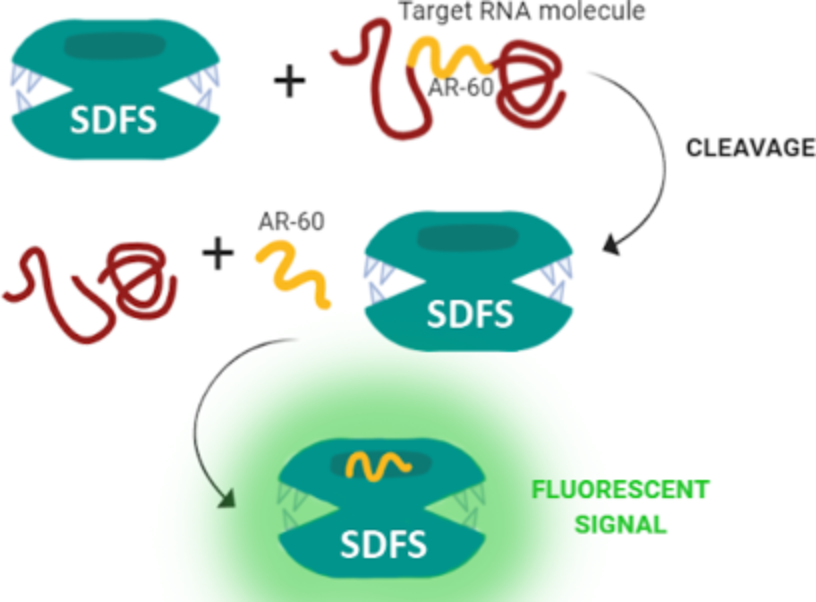Authors: Bryushkova E.A., Gandalipov E.R., Nuzhina Y.V.

Abstract
Nowadays a variety of biosensors are widely used in different fields, including biomedical diagnostics and self-testing. Nucleic acid-based biosensors are typically applied to detect another nucleic acid, proteins, ions, and several other types of compounds. It is most promising to develop simple and effective biosensors for the use in situations where traditional methods are not available due to their complexity and laboriousness. In this project, a novel smart deoxyribozyme-based fluorescent sensor for the detection of androgen receptor mRNA was developed. It consists of several functional modules including two deoxyribozymes 10–23, an RNA-dependent split malachite green aptamer, and an oligonucleotide platform. Deoxyribozymes specifically release a 27-nucleotide RNA fragment that is readily available for the interaction with the aptamer module. This solves a problem of secondary structure in hybridization with the target sequence of full-length mRNA. It was shown that within 24 hours the proposed sensor specifically recognized both a synthetic 60-nucleotide RNA fragment (LOD is 1.4 nM of RNA fragment at 37 °C) and a full-sized mRNA molecule of the androgen receptor. The constructed sensor is easy to use, has high efficiency and selectivity for the RNA target, and can be reconstructed for the detection of various nucleic acid sequences due to its modular structure. Thus, similar biosensors may be useful for the differential diagnosis.
Keywords: androgen receptor; 10–23 deoxyribozyme; nucleic acid sensor; malachite green aptamer; RNA cleavage.
DOI: 10.3762/bjoc.16.100.
Read Full: https://www.beilstein-journals.org/bjoc/articles/16/100.